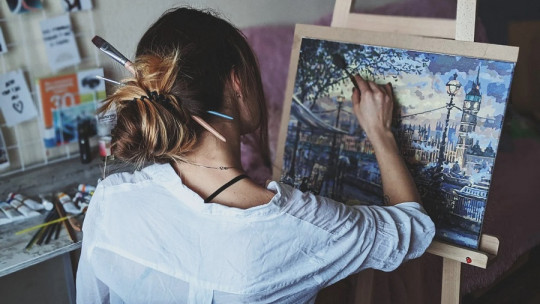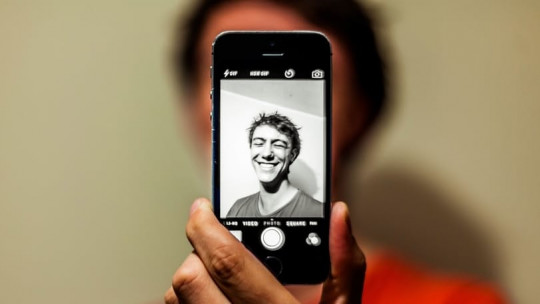Introspection is a complicated action to do. No matter how hard we try, we will always have the doubt of not being sure if we really know ourselves or if we continue to have a biased image of ourselves.
One of the best ways to know yourself is by resorting to self-knowledge activities done with other people It may seem ironic to introspect in company, but the truth is that if we know how others see us we can have a more real image and more realistic self-demands about ourselves.
Below we are going to see a few of these activities, all done in groups but which of course serve to get to know each other better as individuals.
Recommended self-knowledge activities
We can consider as self-knowledge activities all those exercises that serve to introspect and, at the same time, help us improve the image we have of ourselves. These activities allow us to improve our self-concept, define it realistically and see that, although we have our weaknesses, we also have certain strengths and that no one is perfect.
These types of exercises have a therapeutic component in themselves , since by identifying our characteristics and understanding that others also have their weaknesses, we can reduce surreal expectations and self-demands that are impossible to meet. Furthermore, in the course of these activities we share, express and debate the characteristics that we believe we have and what others see in us, seeing that on many occasions the idea we have of ourselves is more negative than that of others. have.
The self-knowledge activities that we are going to see below are all carried out in groups. The reason for this is that to have a good self-knowledge of ourselves it is often necessary to know how others see us. Although they may have their opinions and a biased image of how we really are, sharing their points of view Seen with our own, it can help us readjust our self-concept and reduce expectations, as we have already mentioned.
1. The emotional graph
To carry out this activity we will need squared sheets and markers of different colors. On one of those sheets we are going to make a graph, whose Y axis will be the intensity of our emotions (e.g., from 1 to 10) and the X axis will represent the passage of time (e.g., over week). The idea is represent each emotion with a color and draw it on the graph according to the perceived intensity over time whether on the same day or throughout the week, and at what times we feel better and when we feel worse.
Although one might think that mood changes can be represented dichotomously, in terms of happiness-sadness, this graph allows us to do so in a multidimensional way. In addition to adding that same dimension, we can add other lines such as fun/busy-boredom/unemployed and another one for calm/apathy-nervousness.
There may be times when we feel happy but also bored, while at other times we may be sad but busy or apathetic. Mood changes can be of many types, and the lines on the graph will allow us to see these ups and downs, taking a time perspective and relating it to what everyday things make us feel that way.
2. Know what we want
We will give the participants some sheets on which they will have written the beginning of several sentences and their task will be complete as quickly as possible with whatever comes to mind but in relation to their feelings, desires and volitions The idea is that, although they should not think about it too much or rack their brains, they should always answer referring to themselves.
Some examples of sentences to complete:
Once answered, we will have the participants meet freely in groups, that is, allowing them to share it with those friends or people with whom they get along best Each of these groups will have a person in charge who will have to summarize everyone’s opinions on those questions that the facilitator has indicated should be put together to prevent the exercise from being too long, especially those in which he believes there will be more. coincidences.
Once all the groups have summarized their answers, the general sharing will take place, with the person in charge of each group speaking as spokesperson. It is at this stage that It can be seen that there are more coincidences than discrepancies which will help participants feel normal, to see that everyone has similar insecurities and fears and, if they do not share them, what is certain is that everyone has something that causes them uncertainty.

3. The echo
The class is divided into groups of 5 or 6 participants, all of them having paper and pencil to write. We are going to ask you to be honest with your group and to accept the other opinions that your classmates will make.
We begin by giving enough time for each person to write on their sheet the names of the members of their group and Next to each name you must put what you think each of your classmates is like
Once the group has finished, each of its members will begin by saying their opinion and wish out loud, for example:
“I think I am shy but determined in the end”
Once he has said this about himself, the rest of the participants will respond by telling him what they think of him. The person who receives these answers will write down what his or her classmates say about him or her, to record what has been said about him or her. So Each group will act internally, commenting on what the participants think of their classmates and themselves
In the end everything will be put in common, commenting not on what they have thought about their classmates but on how they have seen that the opinions and visions that others have of themselves correspond to themselves, whether they are more negative or positive than they expected. . This exercise serves to contrast our own image with what others see of ourselves, although we must be careful and make sure that the exercise is going to be done in a group in which there are no bad dynamics or harassment.
4. The tree of times
In this self-knowledge exercise, each participant is given a sheet of paper and they must be allowed to freely use the pencil, colors, brushes and any drawing object.
Each one must make a tree that represents their life , a tree of times that will contain the following parts: our past, represented in its roots and beginning of the trunk; the present, represented in the trunk and main branches; and the future, represented in smaller branches, leaves, fruits, flowers…
Once everyone has made their tree, what they have done will be shared. It can also be suggested that, whoever wishes, leave it displayed in a visible place in the classroom so that others are also motivated to hang it or, at least, can see the usefulness of this type of activity.
This exercise It is ideal not only to get to know yourself, but also allows you to see what others consider about how their own lives have gone and if you have very high life expectations or, otherwise, unambitious.
5. The circle
This exercise consists of drawing a circle that The participants will fill in as a pie chart, making each indicated sector represent something that occupies a certain space in their heart, mind or will Among these significant aspects that can represent are family, friends, studies, work, hobbies…
In the sharing, the participants will comment on why they have made their graphs in that way, indicating the importance of the topic or aspect that they have decided to represent with the highest percentage.
6. The movie of my life
Each participant is given several rectangles of tracing paper (between 4 and 8), the size of a slide. To carry out this exercise it will also be necessary to have colored markers of various thicknesses, giving those involved total freedom to draw important scenes from their lives that, later, they will have to present to their classmates as if it were a slide presentation.
The objective of this exercise is not to explain the image, since it will already be projected, but rather for the participant to explain what they felt in that situation, detailing your feelings, desires and attitudes summed up in a descriptive sentence. The exhibition can be accompanied by playing background music that is consistent with the feelings that the participant is trying to explain. You can also try to give greater emphasis to the exposition through dialogues and onomatopoeias.









